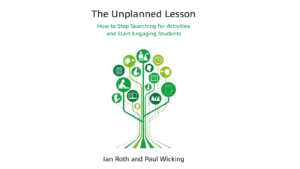Text Chat Activities
A few months ago, I received an email from Mark Oliver who was keen for me to review his self-published book entitled “Text Chat Activities: A resource book for language teachers”. I was initially interested in such a book as this must be one of the most recent publications related to using instant messaging services or the more traditional text messenger. I believe, that prior to reviewing the book, I should introduce the author: Mark J Oliver. He has been an English language teacher for fourteen years and is also a successful author. He has worked in several different countries, such as Australia, Japan, Brazil and many others. His website can be accessed here. Now, without any further delay, let’s start the book review.
Reading the introduction to the book, the author answers what is exactly meant by ‘text chat’, and there is greater recognition of instant messaging applications such as Facebook or Whatsapp within this part of the book. He also highlights that instant messaging is an invaluable method of natural communication which occurs between two people no matter their geographical location. Despite a very brief definition of what he means by ‘text chat’, Mark looks at the broader educational impacts of this area of teaching in the following sub-chapter, “What benefit does text chat have for language learners?”. Within this chapter, the author attempts to look at the benefits of second language development and language use, as well as learners’ views of text chat in second language learning.
There is also recognition of issues teachers may face when using text chat with learners, such as spelling mistakes or unapproved abbreviations. I suppose a key issue missing from this aspect of the book, and a more important issue, is e-safety and whether teachers are able to communicate with their learners via an instant messaging service. In my work environment, I am not allowed to communicate with an under 18-year-old, so this really must be considered with the first part of any book looking at electronic communication. With that being said, with a greater appreciation of e-safety and having controls in place so students are able to communicate effectively with each other, the ideas in the book are well worthwhile. The other sections in the first chapter covered in the ebook include:
- the role of the teacher during a text chat activity,
- providing feedback during an activity,
- how to set up group chat activities with learners,
- the sharing of documents online.
The second part of the book focuses on ‘Pair Activities’ with 19 lesson activities, while the third and final part of the book focuses on ‘Group Activities’, and contains 9 lesson activities. Therefore, there are a total of 28 lessons. Each lesson activity includes the language focus, the expected level suitable for the task, the duration that the task should last as well as the structure of the lesson. The activities included in the ebook are relatively simple to incorporate in lessons but it would take a little practice to gain greater confidence in these tasks. In the appendix of the ebook, there are role cards for some of the tasks.
Overall, the e-book offers an invaluable focus on the educational use of smartphones in the language classroom. Personally, I have encouraged my learners to use smartphones in class as part of a web-quest (a digitalised version of reading dictation or checking an online dictionary) or as a translation tool. However, some of the ideas of using the messaging function of smartphones were in an area I had never really given too much thought to before, and I look forward to trying some of these ideas out in the near future. I would recommend other teachers purchase this e-book and consider using smartphones with younger learners. As mentioned briefly at the beginning, this ebook would benefit from some consideration of e-safety and the suitability or unsuitability of messaging those learners who are under 18 years of age. It would benefit both the learner and the teacher to have lessons available that are more aware of e-safety, which would be a welcome development in the next edition. Nevertheless, you won’t be disappointed should you decide to purchase this e-book.




